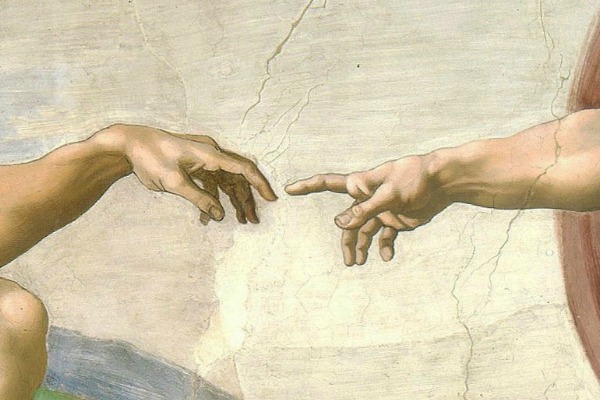
Kenan Camurcu
The epistemic value (which you may also read as 'level of ignorance') of statements claiming that Shah Ismail "shook the homeland from within" or "made Anatolia groan from top to bottom with oppression" is equivalent to Morsi's response of "I will not allow Egypt to be Shiitized" when confronted with reactions to the lynching and murder of Sheikh Shehata, the leading cleric of the Shia community constituting merely 0.5% of Egypt's demographic, by radical Sunnis. The authors of these statements are well aware of this. Speaking ignorantly is a tolerable cost for them in order to amplify the power of the political message they wish to convey.
In the first statement, the text authors have focused on undermining the natural alliance between Kurds and Alevis. In parentheses, they have brought together Sultan Selim and Idris of Bitlis under Sunni identity and informed the Alevis that Sunni Kurds have stabbed them in the back. Additionally, as part of the peace process, Kandil has been assigned the homework of neutralizing the Alevi Kurdish dynamic. However, identifying Hanafi Yavuz with Shafi'i Idris in Sunnism will not be so easy. Because the imam of Shafiism, Muhammad ibn Idris (d. 820), was a supporter of Ahl al-Bayt to a degree that official Sunnism finds impossible to accept. He even recorded this position for his contemporaries and history through a surprising act: at the location of Ghadir Khumm, where the Prophet declared Ali as the leader of Muslims after himself, and just like the Prophet, upon returning from pilgrimage, he climbed onto an elevation and proclaimed to the pilgrims (al-Shafi'i, undated: 89):
O cavalry, halt at the stoning place in Mina
Announce to those sitting and standing in Khif Mosque
When morning comes and pilgrims gather collectively in Mina
Thus cry out to the congregation flowing like the Euphrates
If loving Muhammad's Ahl al-Bayt is Rafidism
Let humans and jinns know, I am apparently a Rafidi
Throughout the spirit of 1994, like others, I too wrote speech texts, but my texts were for repair, renovation, and establishment; they were righteous texts for construction, restoration, building, and peace. The current text authors, however, write for mischief and destruction. Because they are ignorant, unqualified, and without credentials, they scribble rotten, shabby things without reflection. Paracetamol statements that they see as strategic marvels in a convex circus mirror.
The second statement belongs to the post-chief preparations and tensions chapter. When the major rival raised the bar to the level of "they poisoned me" and included potential and prospective rivals in the poisoning combination with the "internal enemies" label, in response to his independent, autonomous move concerning himself, he wanted to show that he was project-oriented and proved his loyalty by demonstrating that he was not even an inch away from the leader by referencing the leader's words. In other words, while wanting to crown his move to criminalize Shah Ismail with "oppression from top to bottom," the subject he was interested in was not Alevism or Shah Ismail.
Despite it being clear that the serious and important rival would snatch the succession through performance in the tests, the warning that he could throw the competition into such a phase (poisoning, internal enemy) resembles intimidation. The rival who has not passed the tests announced his commitment to the party's internal equations by making the nonsensical statement about "Shah Ismail's oppression" a manifest, declaring that he would remain relative and consist only of the leader's version to cope with this record.
Palace intrigues are neither our subject nor our area of interest. For us, the main issue is the never-subsiding heterodoxy anxiety of Sunni orthodoxy. For instance, Morsi's ultimatum that he would not allow Egypt to be Shiitized is a good example.
Morsi's supporter, the Salafi "Coalition of Companions and Ahl al-Bayt (I'tilaf al-Sahaba wa Ali Bayt)," with paranoid anxiety and mood disorder, was criticizing Morsi for accusing the permission given to Iranians to visit religious sites in Egypt as turning a blind eye to attempts to spread Shiism. After Sisi's coup, they would go so far as to say, "Shias entered Egypt during Morsi's time, but suffered a major blow during Sisi's time." Let us recall that the Salafis, who had considerable involvement in the radicalization of the Brotherhood, were among the first to celebrate Sisi's coup.
The brutal murder of Sheikh Shehata during a religious event in June 2013 by a group of 3,000 people was most likely due to his being someone who had converted from Sunnism to Shiism. Large enough to provoke the anxiety in Sunni orthodoxy. As seen in the major psychosis in Mahmud II's bombing of Janissary barracks and confiscating Bektashi lodges to give them to Sunni Naqshbandis, with all the horror of a bipolar episode, the ancestor of secular modernization.
The savage murder committed by the crowd incited by Salafis took place under conditions where the ruling Brotherhood supported it from behind the scenes and therefore the police did not intervene. Human Rights Watch's Middle East director Joe Stork said, "The savage sectarian lynching came after two years of hate speech against the minority religious group that the Muslim Brotherhood tolerated and sometimes participated in." The attackers dragged the four Shias they killed, whose hands and feet were bound, through the streets with takbirs.
It is certain that Kavalalı Mehmet Ali Pasha's ability to build Egypt as an independent country from the Ottomans drew its intellectual and cultural power from the Shia Fatimid (969-1171) legacy. Despite Egypt being a Sunni-majority country, the Fatimid trace is so deep that it cannot be erased from culture, socio-political memories, or anything visible or invisible. All they do is stamp "Sunni" on it, that's all. Behind the impressive intellectual activity symbolized by the translation of Greek classics during the Abbasid period was also the Shia Buyid family (934-1055). There is no doubt that the frailty of Sunnism, which consists only of jurisprudence, against this powerful cultural heritage exacerbates the anxiety.
The situation is no different in Turkey, which is full of names like Fatima, Ali, Hasan, and Husayn. No matter how much political power encourages it, no matter how enthusiastic it gets, marginal Salafism cannot penetrate the culture by stubbornly and angrily giving their children names like Muawiya and Yazid. Ahl al-Bayt is in the essence of Anatolian gnosis, and the capacity of the House of Osman to recourse to the three crescents (Allah-Muhammad-Ali) is an invisible wall before Salafi-fermented Sunni orthodoxy.
Forget those who attribute Ibn Taymiyyah's opposition to Sufism, who religionized Umayyad racism under the name of Salafism, to the struggle against superstitions; the real reason is that the intellectual and cultural legacy of Ahl al-Bayt, purged from Sunni jurisprudence, lives on within Sufism. Muhammad Zakiyuddin Ibrahim (d. 1998) from Al-Azhar scholars wrote that among Ibn Taymiyyah's many heresies, the most disgusting was attributing hypocrisy to Fatima due to her oppositional attitude toward Abu Bakr and Umar (Ibn Taymiyyah, 2009: 4/300). (Husayn Ansarian quoting from Kalimat al-Ra'id [2/546, Mu'assasat Ihya' al-Turath], "Ibn Taymiyyah wa Nifaq Fatima").
Ibn Taymiyyah's sole concern and struggle was to radicalize Sunnism and impose it on Alevis and to uproot the Ahl al-Bayt legacy from religious culture. So much so that he exalts Ibn Muljam, who treacherously approached Ali from behind while he was praying and killed him, with the epithet "the most devout of people" (Ibn Taymiyyah, 2009: 5/47). He praises the treacherous killer as a pious person who did this out of love for Allah and His Messenger, someone who prayed, fasted, and read the Quran. But when it comes to the person who killed Umar, he dismisses him as "an infidel who hates religion" (Ibn Taymiyyah, 2009: 7/153).
Ibn Taymiyyah is someone who attacked Alevi villages with his supporters with the lie that Nusayris were spying for the Tatars in the mountains of Damascus (Muhammad Abu Zahra, 1991: 40-41. Quoted by: Javad Alipur, 2017: 42). The militants of Julani and multinational organization consortiums are students of this school.
Ibn Taymiyyah, the ideological father of radical Sunnism, constantly repeats the phrase "They must be compelled to repent, otherwise they should be killed" for Shias and Alevis. In his shameful fatwa that does not allow any religious and ethnic difference to exist in Muslim society, he writes that Nusayris are more infidel than Jews and Christians and their harm to Islam is greater than that of combatant infidels. To expand his target range, he added to his fatwa that they appear to be Shia and lovers of Ahl al-Bayt (Ibn Taymiyyah, 2009: 35/149-160). Thus, Shias are also included in the massacre list.
There is no need to twist and turn the words; behind the Alevi hostility lies partisanship for the hatred, anger, wrath, and reaction that the Umayyads and Umayyad supporters felt toward the essence of Fatima-Ali-Hasan-Husayn, and the matter goes back to the beginnings of Islamic history.
In the long narration in al-Harith's Musnad, it is recorded that Caliph Umar called Ali, Uthman, Talha, Zubayr, Abd al-Rahman ibn Awf, and Sa'd to determine the caliph after himself. When they came, no one was speaking except Ali. Umar said: "O Ali, they know your closeness to Allah's Messenger and the understanding and knowledge that Allah has granted you. If you take charge, fear Allah." After they all left, Umar said after them: "If they bring the sparse-haired one (Ali) to power, he will guide them to the right path." Upon this, his son Abdullah (ibn Umar) asked: "What prevents you from doing this?" Umar's answer contains sufficient information about the cultural code of not being pleased with Alevis: "I hate to undertake this [giving him the duty] in life and in death" (Nur al-Din al-Haythami, 1992: 622-623, hadith 594). In the evaluation of the narration, it is stated that the narrators are reliable and the hadith is sahih; that Abu Nu'aym in Hilyat al-Awliya, Ibn Sa'd in Tabaqat, al-Hafiz (Ibn Hajar al-Asqalani) in al-Matalib, al-Hakim (al-Nisaburi) in al-Mustadrak included the narration, and that Bukhari narrated similar ones. Additionally, Majma' al-Zawa'id and Bayhaqi are also referenced.
Abdulhamid's solution to overcome the disturbing Alevi complex was to write a new history backward. In history textbooks written before the 1891 revision, there was no mention of Yavuz Sultan Selim cleansing Anatolia of Shias and Sunnifying it. In the new historiography, it was narrated that Selim massacred Shias, killed, cleansed, and put to the sword about 40,000 Sufis who created disorder and incited sedition in Anatolia in the name of order, unity, and integrity (Alkan, 2005: 1/890).
Additionally, the intelligence organization established in Yıldız was constantly preparing reports about Shia scholars and tribes for Abdulhamid (Deringil, 2010: 145). However, Iran's rulers, the Qajars (1789-1925), never had such activity against the Ottomans. It is accurate to detect the fear and anxiety Abdulhamid felt about Anatolia becoming Shiitized again and Alevism regaining its former power in the Ottoman state in his close monitoring of Iran.
In the film Conclave, in the midst of the papal election crisis, when Islamists detonate a bomb near the Vatican, causing the windows to shatter and cardinals to be injured, the hardliner Italian Cardinal Goffredo Tedesco begins his famous tirade:
"Here at last, we see the result of the doctrine of relativism, this doctrine so beloved by our liberal brethren. A relativism that assigns equal value to all beliefs and passing fancies. Now when we look around us, we see that the homeland of the Holy Roman Catholic Church is full of mosques and minarets of the prophet Muhammad! We show tolerance to Islam in our lands, but they humiliate us in their own lands. We feed them in our own homelands, but they destroy us. How much longer will we persist in this weakness? They are literally at our gates now. What we need now is a leader who understands that we are facing a real religious war. Yes, a religious war. We need a leader who will end this drift that has been going on almost non-stop for the last 50 years. How much longer will we persist in this weakness, how much longer?"
If we translate the cardinal's rebellion against uncertainty, we encounter the anger of dogmatic Sunni orthodoxy toward the heterodoxy belonging to the culture of ambiguity. Thomas Bauer, in The Culture of Ambiguity and Islam, explains that Muslims learned dogmatism from the West.
The eternal fantasy of power-worship demands authoritarian regime certainty, sharpness, judgment, domination; it cannot exist otherwise.
Muslims' enthusiasm for post-modernism for a period was due to the hope that internal objection to the sense of certainty and self-assurance would weaken the West. While shouting post-modernism against the West, why didn't Western thinkers look at what they had in their hands with suspicion, like Western thinkers, right?
The main issue is the conflict, tension, and dispute between certainty and relativism. Dogmatic Islam sees this choice as the West's soft spot in the Western world trying to sustain relativism for peace. It wants to exist with its own certainty in the world of relativism. When objections come to this, it resorts to the weapon of Islamophobia. For this reason, Sunni Orthodoxy is disturbed by the existence of heterodoxy.
Translated by Gemini
References
Alipur, Javad. (2017). "The Influence of Ibn Taymiyyah's Thoughts on the Intellectual Lines and Conclusion of Salafi-Takfiri Groups", Political Thought in Islam, issue 12, pp. 35-62, Tehran: Publications of Imam Khomeini and Islamic Revolution Research Institute.
Alkan, Mehmet Ö. (2005). "An Essay on the Birth and Evolution of Official Ideology", Political Thought in Modern Turkey, The Accumulation of Tanzimat and Constitutional Monarchy. İletişim Publications.
Deringil, Selim. (2010). Abdulhamid II and Ottoman Foreign Policy. İletişim Publications.
Ibn Taymiyyah. (d. 1328). (2009). Minhaj al-Sunna al-Nabawiyya, Beirut: Dar al-Kutub al-Ilmiyya.
Muhammad ibn Idris al-Shafi'i. (d. 820). (Undated.) Diwan al-Imam al-Shafi'i, al-Jawhar al-Nafis fi Shi'r al-Imam Muhammad ibn Idris. Cairo: Maktabat Ibn Sina.
Muhammad Abu Zahra. (1898-1974). (1991). Ibn Taymiyyah: His Life and Era. Cairo: Dar al-Fikr al-Arabi.
Nur al-Din al-Haythami. (d. 1405). (1992). Bughyat al-Bahis an Zawa'id Musnad al-Harith. Medina: al-Jami'a al-Islamiyya.





0 Comments